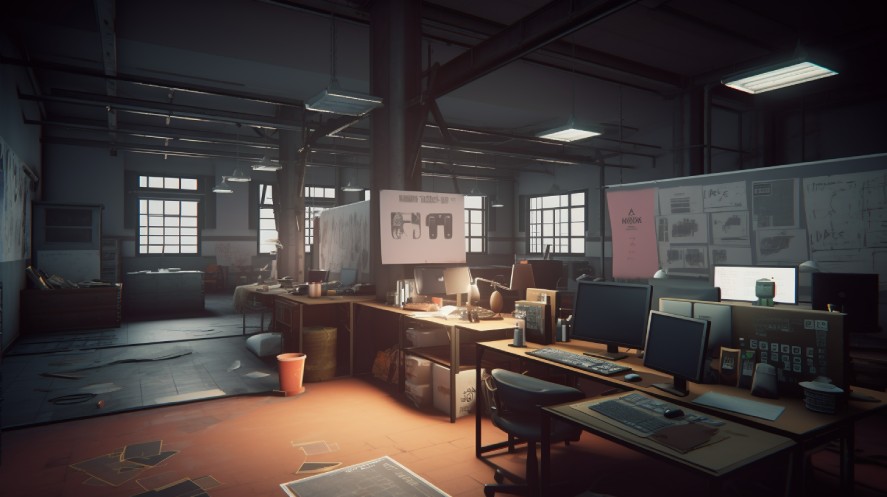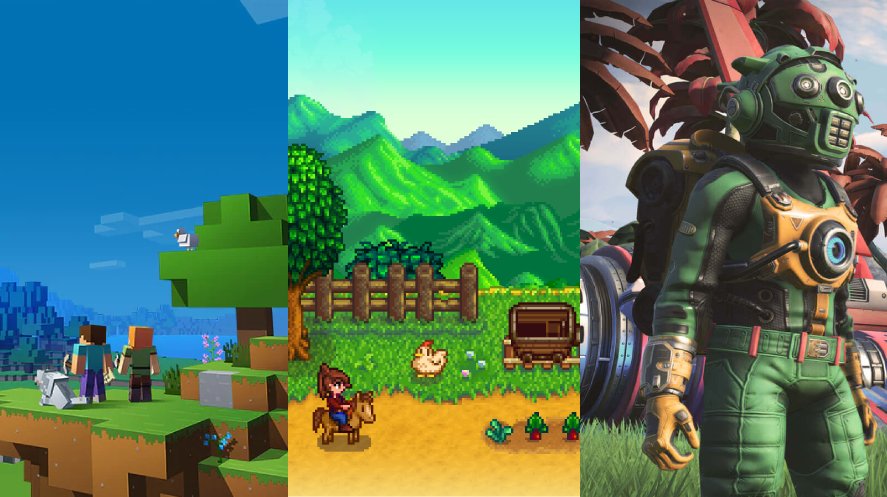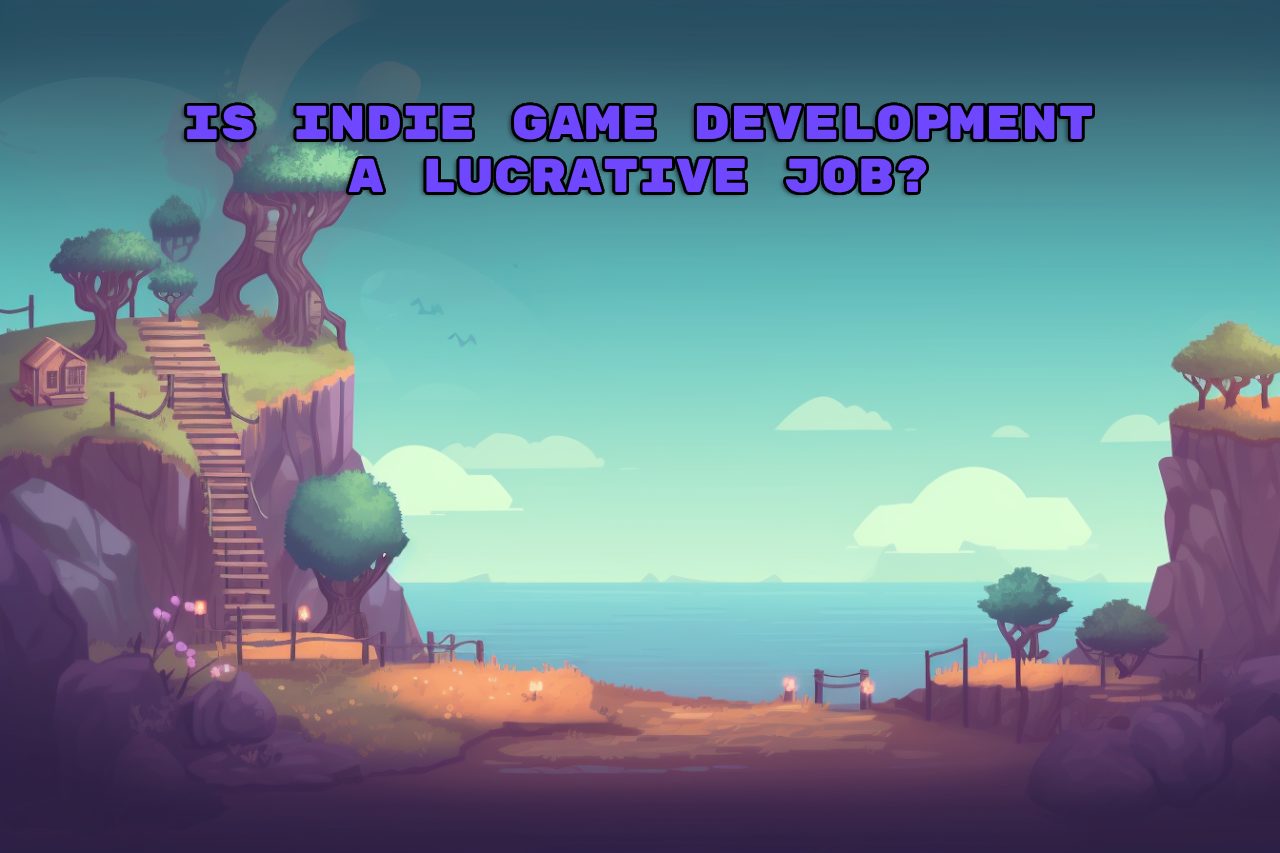Over the past few decades, the indie gaming industry has continued to develop significantly. As a result, players can immerse themselves in diverse gaming experiences.
While billion-dollar game studios continue expanding, indie game publishers contribute to the industry with their innovative niches.
Indie games, which are created by indie game developers or small teams, often prioritize creative ideas and distinctive art styles. This leads to a refreshing experience compared to larger development studios.
The indie games often cover creative visions, themes, genres, and narratives that are not widely seen in mainstream titles.
By capturing these appealing ideas, indie games can attract a broad range of players in the gaming community. Also, indie games focus on artistic expression and create impactful experiences for players.
What is Indie Game Development?
Unlike mainstream titles, indie game development is often conducted by small teams or indie developers without large publishers’ financial backing or resources.
Indie developers frequently work on their passion to deliver distinctive gaming experiences.
The indie game development process typically includes these essential stages:
- Design
- Programming
- Art
- Sound
- Testing
The duration of developing an indie video game can vary from a few months to several years, depending on the complexity of the game.

There are two main differences between indie developers and major studios.
The first thing is the team size. Naturally, major studios tend to have larger teams compared to indie developers.
Second, the larger studios often have the advantage of larger budgets to develop desired games.
On the other hand, indie developers often work with more limited resources.
If you’re curious about how much money on average do indie games earn, check out this article!
Indie Game Publishing – Getting Indie Games to Players
During the mid-2000s, players got used to conventional game titles and started looking for something new, like a more creative and story-driven experience.
Capturing these ideas, indie games became more popular as a new way to satisfy players.
So, how to publish an indie game?
There are two ways for indie game developers to publish their creations to the market.
If indie game dev struggles to source funds, their ideal solution is to find indie game publishers. With that solution at hand, they will receive financial support, marketing opportunities, and connections to foster the game’s success.

On the other hand, self-publishing requires indie developers to manage all tasks themselves. Of course, with this huge responsibility, they can retain a larger share of revenue and be more independent.
Following dedicated effort, indie games should be presented to a broad audience.
Popular platforms that should be taken into consideration include Steam, Epic Games Store, GOG (Good Old Games), itch.io, Humble Bundle, Nintendo eShop, and PlayStation Store.
These platforms help indie games reach players worldwide and expand in the gaming community.
Financial Realities for Indie Game Developers
Indie game development is challenging, and capturing all related financial realities involved in the process is crucial.
1. Investment and Production Costs
Developing a game is not a simple process, and of course, there are various costs that arise throughout the journey that developers should carefully consider.
These are the necessary costs that indie game developers have to cover for the indie game development process. Among all costs, the investment in software, hardware, and other tools should be prioritized because they determine the quality and functionality of the final product.

Moreover, operating costs are also important.
This includes expenses related to marketing to promote games and attract players. Additionally, there’s the cost of hiring freelancers for specialized tasks to enhance work efficiency.
While major studios often have substantial resources from publishers, indie game developers should plan carefully and come up with creative solutions to optimize their tighter budgets.
2. Revenue Streams
According to ALCOR, the junior indie game developer in the US can earn $40,500 a year. Let’s walk through to see where their income comes from.
The primary income stream revolves around direct game sales. Here, indie game developers sell their creations directly to end-users.
In addition to direct sales, indie game developers can explore earnings from Microtransactions and DLC.
For easy understanding, microtransactions are the in-game purchases that players can make to enhance their gaming experience.

Developers can generate revenue through these transactions by providing players the option to purchase character skins or outfits.
DLC, on the other hand, represents extra download content for players after the first release.
This content might encompass new levels, characters, weapons, or skins, offering players fresh experiences while contributing to the game’s financial sustainability.
Another opportunity that should be considered is merchandising. This method becomes effective when indie games gain recognition among a wide player base.
Consequently, selling product lines such as plush toys or posters becomes a fantastic way to earn money.
3. Risks and Challenges
While indie game developers have access to various revenue sources, they must also face numerous risks and challenges.
First, it can not be denied that standing out among the wide gaming market is a challenge. It is necessary for developers to capture players’ interests to create games that truly adapt to them since there are vast of indie games created every day.
Second, there is no certainty for the success of games. Despite hard work and creative efforts, there is always the possibility that players will not well receive the game.
Last but not least, financial instability and the absence of steady income are concerns that indie developers often face. This uncertainty can disrupt their game development progress and require them to carefully consider financial plans.
Success Stories & Contrasting Examples
When it comes to indie developer success stories, the first that should be mentioned is Minecraft, which is also known by non-gamers.
While Microsoft acquired the rights in 2014 for $2.5 billion, Minecraft was originally created by Marcus “Notch” Persson with the idea to put all people into an imaginary world where they can build their own construction.
Another famous indie video game story is Stardew Valley, which began its journey with a one-person development team, Concerned Ape.

Similarly to Harvest Moon, it simulates the daily life of farmers. What makes it outstanding is the tranquil and slow-paced gameplay, encouraging players to put their effort into developing their own farm gradually.
Undertale is also a good example of a success stories, which captivates players with a delightful soundtrack and funny, weird characters.
Besides successful indie games, there are various situations that indie developers have to face, resulting in failure despite the high quality of the game.
For example, No Man’s Sky came up with the idea to generate a vast universe for players to explore. However, the lack of certain promised features led to disappointment among players.
This, in turn, resulted in financial failure as the game failed to create a positive perception among players from the beginning.
There are a variety of factors that can affect the success or failure of a game, and it is important to capture from both sides.
For the game to be successful, the first thing we should focus on is the graphics & design.
This doesn’t necessarily mean a game needs to have complex, realistic graphics as major games, but an interesting and professional interface will be the factor to retain players.
Compelling stories or narratives can create emotional connections with players, leading to a more memorable experience.
In addition, marketing campaigns, budgets, and clear strategy are all critical factors.
The Intangibles of Indie Game Development
Indie game development not only brings tangible assets for developers but also acquires intangibles to inspire all those pursuing the creative path.
1. Passion and Vision
Creating something original and unique is often the driving force behind every indie developer’s pursuit of their dreams.
There’s nothing compared to the feeling of bringing personal ideas to life.
While working for studios may require developers to follow predefined concepts, working on their own projects provides them with the freedom to explore emerging ideas and ample space to develop them.
The journey from a simple idea to a fully functional game is something you should be completely proud of.
2. Community and Networking
Indie game festivals, conventions, and online communities bring together developers from various locations.
These gatherings provide a platform to share ideas, cultivate innovative concepts, and establish connections within the indie game developer communities.

They also offer the opportunity to showcase games and receive feedback from like-minded individuals.
Additionally, indie game developers have the opportunity to build a loyal fanbase to interact directly with them.
By doing this, they can receive real feedback, gather insights, and shape their creations to closely align with the players’ desires.
3. Freedom and Control
In indie game development, freedom and control are a special kind of power.
It means making choices without outside pressures and having control over how the game is created and shared.
Indie game makers have the freedom to follow their own ideas and the control to decide everything from the creative process and game direction to publishing rights.
With all of this in your mind, check out this “How to Become an Indie Game Developer?” article!
Following indie game development as a career involves carefully considering both financial prospects and intangible rewards.
While indie game development can be lucrative, it is important to note that risks and uncertainties always exist.
For aspiring developers, the key is to focus on passion while being aware of potential obstacles and being prepared to face challenges.

